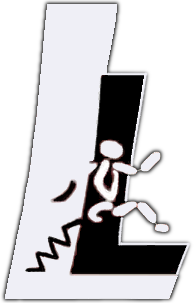BioBiped

The BioBiped1 is the first iteration of a series of bipedal humanoid robots within the joint project “BioBiped”, which is a collaboration with AG SIM of TU Darmstadt. Using serial elastic actuation mimicking the main muscle groups in human legs, we aim at reproducing dynamical human gaits, namely running (jogging) and walking as well as stable standing. While the first iterations are restricted in the motion dimensions (hopping, motion in a plane), we ultimately aim at free, autonomous running robots that can perform maneuvers. For this, an onboard PC is implemented. For further information, see the project homepage www.biobiped.de.
Trunk Stability

Motivated from analyses of human experiments we investigate a simple strategy for stabilizing the trunk during locomotion. The direction of the ground reaction force may plays a crucial role in bipedal gait. Using reduced models we proof our hypotheses about hip control without loosing advantages of spring-like legs. After investigating trunk stability in two dimensions (sagittal plane) we will pass into three dimensions.

The trunk model is based upon the bipedal spring-mass model extended by a rigid trunk. During stance, a hip torque can be applied. We compare the solutions of the trunk model to the solutions of the bipedal slip and thus characterize the quality of control strategies.

PogoWalker is a robot with a design strongly related to the spring-mass model. It has telescoping spring-like legs and a trunk with free pitch motion. This robot allows for testing novel strategies required for stabilizing gait and trunk. With the PogoWalker we will reproduce the leg dynamics of human.

The fundamental model for investigating bipedal gaits is the spring-mass model. In this template the legs are represented as massless springs and the body is reduced to a point mass. The spring-mass model is able to show the leg dynamics in both, walking and running.

Numerous biomechanical variables are supplied by a number of experiments on human walking and running. These include ground reaction forces, motion analysis, and surface EMG, which are basis for a broad variety of analysis.
Involved People: Moritz Maus,
Maziar Ahmad Sharbafi,
Christian Ludwig,
Christophe Maufroy, André Seyfarth
Publications
- Maus HM, Rummel J, Seyfarth A. Stable Upright Walking and Running using a simple Pendulum based Control Scheme, Advances in Mobile Robotics: Proc. of 11th CLAWAR, Marques L, Almeida A, Tokhi MO, Virk GS (Eds.), World Scientific: 623-629, 2008.
- Maus M. Stabilisierung des Oberkörpers beim Rennen und Gehen. Diplomarbeit FSU Jena, Lauflabor, 2008.




